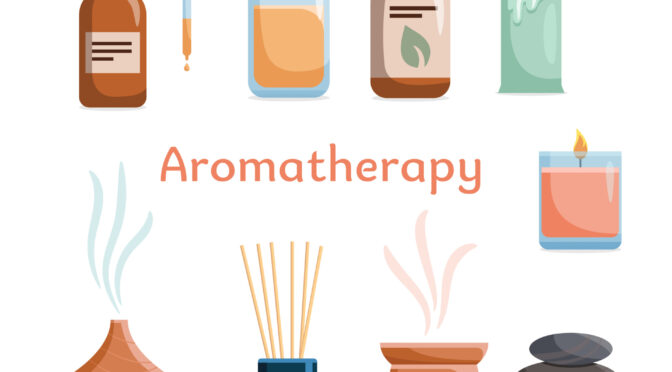 Smoking Kills
Smoking Kills
(This is how people who are addicted to using/ smoking Tobacco products rationalize using/smoking Tobacco products.)
Tobacco smoking has been fingered (e.g., U.S. Department of Health, Education, and Welfare [U.S. DHEW], 1964) as a major cause of mortality and morbidity, responsible for an estimated 434,000 deaths per year in the United States (Centers for Disease Control [CDC], 1991a).
But, did you know that the so much publicized 400,000+ “smoking-related’ deaths in the US simply does not exist?
That number is a guess… a heavily slanted, politically manipulated estimate using a computer model programmed with the assumptions of causality in synergy with the current political agenda against tobacco.
It DOES NOT represent an actual body count.
Some claim that about 10 million people in the United States have died from causes attributed to smoking (including heart disease, emphysema, and other respiratory diseases) since the first Surgeon General’s report on smoking and health in 1964 with 2 million of these deaths the result of lung cancer alone.
In fact, they like to say that “Cigarette smoking is the single most preventable cause of premature death in the United States.”
They declare one in every five deaths in the United States is smoking related. Every year, smoking kills more than 276,000 men and 142,000 women. (Centers for Disease Control and Prevention. Smoking-attributable mortality and years of potential life lost–United States, 1990. Morbidity and Mortality Weekly Report 1993;42(33):645-8.)
How do they explain why non-smokers (75% of heart disease deaths) die from heart disease?
Smoking Causes Cancer
“Ninety-five per cent of lung cancer deaths are due directly to cigarette smoking”, according to Dr Desmond Carney, oncologist at University College, Dublin, and secretary general of the International Association for the Study of Lung Cancer.
Women who smoke increase their risk of dying from lung cancer by nearly 12 times and the risk of dying from bronchitis and emphysema by more than 10 times. Between 1960 and 1990, deaths from lung cancer among women have increased by more than 400%–exceeding breast cancer deaths in the mid-1980s.(Morbidity and Mortality Weekly Report 1993;42(44)) The American Cancer Society predicts that 80,000 women will develop lung cancer this year and 67,000 will die from it, as compared to 43,500 deaths from breast cancer.
Men who smoke increase their risk of death from lung cancer by more than 22 times and from bronchitis and emphysema by nearly 10 times. Smoking triples the risk of dying from heart disease among middle-aged men and women. (CDC Smoking-attributable mortality and years of potential life lost–United States, 1990. Morbidity and Mortality Weekly Report 1993; 42(33):645-8.)
Now that you’re totally terrified,
take a look at it another way…
70%of all cancers occur in non-smokers.
The National Cancer Institute, National Institutes of Health report in the 1995 Information Please Almanac states that only 30% of all cancers are caused by smoking.
Did you know that United Nations statistics have listed Japan and South Korea respectively as first and second in both life expectancy and tobacco consumption? If smoking were really as dreadful, harmful, and dangerous as the Anti-Smoking propaganda blitz claims it to be . . . how can this be true?!
The Japanese smoke twice as much as Americans and yet have half the number of lung cancers per 100,000 people.

Why do some people get lung cancer — even if they never smoke?
According to the Centers for Disease Control (CDC), lung cancer is the number one cause of cancer deaths worldwide. The American Thoracic Society points out that over 75 percent of lung cancers are small cell lung cancers (NSCLC) and have an average overall 35-year survival rate of only 14 percent. Previous research has shown that about 90 percent of NSCLC appear to be activated by specific signaling pathways in lung tissue. The new study by Dr. Cho and his research team found that high amounts of dietary inorganic phosphates actually stimulate those same cancer-triggering pathways.
New research suggests eating a lot of processed foods containing inorganic phosphates could be the explanation. In research published in the American Journal of Respiratory and Critical Care Medicine, published by the American Thoracic Society, scientists from Seoul National University conclude that a diet high in inorganic phosphates, which are found in a host of processed foods including meats, cheeses, beverages, and bakery products, might spur the growth of lung cancer. The researchers also suggest the food additive may contribute to the development of malignancies in people predisposed to lung cancer.
While living organisms need a moderate level of phosphate, the use of inorganic phosphates as a food additive to increase water retention and improve food texture artificially has soared over the past decade. That means the average American diet is loaded with excess amounts of phosphates. “In the 1990s, phosphorous-containing food additives contributed an estimated 470 mg per day to the average daily adult diet. However, phosphates are currently being added much more frequently to a large number of processed foods, including meats, cheeses, beverages, and bakery products. As a result, depending on individual food choices, phosphorous intake could be increased by as much as 1000 mg per day,” Dr. Cho explained in the media statement.
In truth, smoking is not a leading cause of cancer.
Lung cancer is primarily a condition developed in old age, with average age of onset age 65, according to American Cancer Society literature. It’s estimated more people will die of lung cancer in populations of older Americans, and where older Americans live, there more lung cancer deaths will be estimated. More incidences of lung cancer and deaths from lung cancer are likely to occur in Florida than in any other state. That’s where the highest percentage of retirees lives. And that’s where ACS estimates more lung cancers will occur. Lung cancer is a disease of old age, not smoking.
Research has now firmly linked many of today’s cancers with tainted virus vaccinations given in the early 1950s. In 1960, researchers discovered that the polio vaccine distributed to certain states was infected with another virus called “Simian Virus 40.” SV-40 is a monkey virus that is not normally found in humans. Unknown at the time, it was present in hundreds of rhesus monkeys that were used to grow and harvest the polio vaccine. Injected into research animals, the SV-40 virus causes brain and lung cancers. Now, some forty years later, its effect on humans is just being investigated.
- Michele Carbone, Assistant Professor of Pathology at Loyola University in Chicago, has recently isolated fragments of the SV-40 virus in human bone cancers and in a lethal form of lung cancer called mesothelioma. He found SV-40 in 33% of the osteosarcoma bone cancers studied, in 40% of other bone cancers, and in 60% of the mesotheliomas lung cancers.
- Researchers from the Institute of Histology and General Embryology of the University of Ferrara, lead by Dr. Fernanda Martini, discovered SV-40’s presence in a variety other tumors. They found the rhesus monkey virus in 83% of choriod plexus papillomas, in 73% of ependymomas, in 47% of astrocytomas, in 50% of glioblastomas, and in 14% of meningiomas.
- Even more shocking, SV-40 has appeared in 61% of all new cancer patients — patients even too young to have received the contaminated vaccine being administered forty years ago!
- Instead of getting the “dead” virus in an injection, the Federal vaccination policy was changed mandating that children should be given the new live “oral polio vaccine” (OPV). This decision was based upon the belief that the OPV recipient would “shed” the virus through body contact with other non-vaccinated children and adults, thereby spreading the “live” virus throughout the population. The SV-40 virus that contaminated the oral polio vaccine quickly spread from child to child and from child to adult, crossing state lines and national boundaries. By 1960, when the virus was first detected, it was already too late to prevent its dissemination throughout the population. The FDA quietly and gradually instituted a program to eliminate rhesus monkeys, which harbor the SV-40, and replace them with African Green monkeys that are free of the virus.
A number of public statements have been made by the National Cancer Institute, attempting to put their spin on these disturbing revelations. In a statement published in the January (1999) New England Journal of Medicine, the institute states that there is no evidence of an increase in humans of the types of cancers found in laboratory animals that have been injected with SV-40. But other researchers remind us that SV-40 has already been found in a wide variety of other tumors. It has been shown that individuals who received the tainted oral vaccine demonstrate a higher occurrence of these cancers.
Not surprisingly, the US government and its agencies are reluctant to pursue this matter. In fact, requests to the National Institute for Health for grants to study the SIV and simian cytomegalovirus (SCMV) were recently denied. Microbiologist Howard Urnovitz, Ph.D., may have an explanation as he stated in the Boston Globe: “that almost 100 million Americans were exposed (to SV-40) through a government sponsored program, but for over 30 years, there has been virtually no government effort to see if anyone’s been harmed by the exposure.” He added, “The government will not fund science that makes it look culpable.”
Philip Wiley sought at least $13.3 million in compensatory damages from six tobacco companies and two industry groups for the 1991 death of his wife. A jury in Muncie, Indiana agreed there is no proven connection between second hand smoke and cancer and said cigarettes were not a defective product that their makers were not negligent and the tobacco industry was not liable in the cancer death of a nonsmoking nurse exposed to secondhand smoke at a veteran’s hospital. Industry attorneys pointed out that Mrs. Wiley’s cancer may have had other causes and could have started in her pancreas, then spread to her lung.
Smoking May Actually Be Healthy For You
Smoking may actually help reduce the risk of breast cancer in some women, according to a study, published in the Journal of the National Cancer Institute. The study found that smoking reduces by 50 percent the risk of developing breast cancer in women who have a rare genetic mutation that can lead to the disease.
Studies have shown evidence of an inverse relationship between smoking and the risk of contracting Alzheimer’s disease or Parkinson’s disease. In fact, most studies show that the more one smokes, the lower the risk level.
Scientists reported at the Society for Neuroscience annual meeting that they’re encouraged they can design medications to capitalize on the benefits of nicotine without cardiovascular and other side effects. Apparently, they found that Nicotine-like compounds can improve memory and might one day be used in pills to treat disorders like Alzheimer’s disease. [CBS Market watch, Nov 8, 1998]
What Is the Leading Cause of Death in America?
Is cigarette smoking the single most preventable cause of premature death in the United States?
- The CDC estimates 434,000 smoking related deaths per year in the U.S.
- The number of babies that die from abortion in the United States is 1.2 million a year.
A definitive review and close reading of medical peer-review journals, and government health statistics shows that American medicine frequently causes more harm than good. The number of people having in-hospital, adverse drug reactions (ADR) to prescribed medicine is 2.2 million. Dr. Richard Besser, of the CDC, in 1995, said the number of unnecessary antibiotics prescribed annually for viral infections was 20 million. Dr. Besser, in 2003, now refers to tens of millions of unnecessary antibiotics.
The number of unnecessary medical and surgical procedures performed annually is 7.5 million. The number of people exposed to unnecessary hospitalization annually is 8.9 million. The total number of iatrogenic deaths is 783,936. It is evident that the American medical system is the leading cause of death and injury in the United States. The 2001 heart disease annual death rate is 699,697; the annual cancer death rate, 553,251. [Death by Medicine]
Quitting Can be Dangerous
According to three medical doctors writing in the journal Medical Hypotheses, giving up smoking can kill you. The doctors were “struck by the more than casual relationship between the appearance of lung cancer and an abrupt and recent cessation of the smoking.” In 182 of the 312 cases they treated, habitual smokers of at least a pack a day for at least a quarter-century developed lung cancer shortly after they gave up smoking.
In a rush to cover their tracks and bad statistics, anti-smoking advocates are quickly revising their numbers to be more in line with their political ambitions. In the 1960’s epidemiologists estimated that smoking killed one fourth of all regular smokers. That estimate was later raised to one third. More recently they suggest that both estimates are too low. According to scientist Richard Peto, lifelong cigarette use, particularly if begun before age 20, kills at least half of all smokers.
CDC Regularly Misrepresents the Facts
Americans are not experiencing the “epidemic of tobacco related disease and death” the anti-smokers claim. If that were true, why would annual death rates decrease in the U.S. as cigarette sales rates increase?
| Cigarette
Census Death by Death Sales per
Year Population All Cause Rate% Billion
1900 75,994,600 1,307,107 1.72 2.5
1910 91,972,260 1,351,992 1.47 8.6
1920 105,710,600 1,374,358 1.30 44.6
1930 122,775,100 1,387,358 1.13 119.3
1940 131,669,300 1,422,028 1.08 181.9
1950 150,697,400 1,446,695 0.96 369.8
1960 179,323,200 1,703,570 0.95 484.4
1970 203,302,000 1,921,031 0.94 536.5
1980 226,545,800 1,989,841 0.88 631.5
1990 248,709,900 2,162,000 0.87 525.0 |
Smokers represented nearly 50% of the adult male/female population for several decades in the United States according to the Centers for Disease Control and Prevention. Smoking among adults decreased dramatically from 42% in 1965 to 26% in 1994. During this period, smoking among the adult male population declined from 52% to 28%; adult female smoking declined from 34% to 23%. In 1994, 48 million adults 18 years of age and older (25.3 million men, 22.7 million women) were current smokers in the United States.
If nearly 50% of the population smoked, you would expect at least nearly 50% of the people who die would be smokers, if smoke has nothing to do with dying. It stands to reason we should start suspecting that smoke kills smokers only when over 50% of those who die in a given year are smokers. By their own statistics, only about 20% of the deaths are smokers.
At the end of World War II, about 90 per cent of the adult male population of Britain smoked. If lung cancer takes about 20-25 years to show, as some claim, then by 1965, or 1970 at the latest, we would have seen an epidemic of truly catastrophic proportions. One in every eleven British men would have been dying of lung cancer. This simply did not happen.
There hardly appears to be the profound danger anti-smoking advocates would have us believe. As a matter of fact, it would appear you have a greater chance of dying if you’re a non-smoker!
In another look at the numbers, 38% of the people who smoke live beyond 80 years old, 50% live beyond 75 and 85% live beyond 65. This compares to 43% of non-smokers living beyond 80 years old, 50% of non-smokers live beyond 75, and 85% of non-smokers live beyond 65. The government and anti-smoking lobby can’t explain this disparity, so they lie.
Fewer Cigarettes Equals MORE Cancer?
U.S. historical statistics show that, in the period 1973-1994, annual per capita consumption of cigarettes FELL from 4,148 to 2,493. But in the same period, the incidence of lung and bronchial cancer ROSE from 42.5 to 57.1 cases per 100,000 population. How can this be if the propaganda of the Anti-Tobacco Pharmaceutical Cartel is correct?
The deluge of anti-smoking hysteria is actually a very recent thing. And it’s quite sudden too. Look at a film from only 10 or 15 years ago and you’ll see everyone smoking away merrily and without a worry. They’re smoking in the elevator, in the office and, of course, in every decent bar!
How can it be that we’ve been so suddenly immersed in this tidal wave of warnings and fear and – let’s be clear – propaganda? Doesn’t it seem a bit too orchestrated?
At the risk of repeating myself again…
It’s because of money, control, and jurisdiction.




 Effects on the Lungs
Effects on the Lungs

 Definition of Substance Abuse
Definition of Substance Abuse





 Aromatherapy uses aromatic essential oils medicinally to improve the health of the body, mind, and spirit. It enhances both physical and emotional health, we recommed
Aromatherapy uses aromatic essential oils medicinally to improve the health of the body, mind, and spirit. It enhances both physical and emotional health, we recommed 
 he 19th century and focused on using chemical drugs. However, the French and German doctors still recognized the role of natural botanicals in treating illness.
he 19th century and focused on using chemical drugs. However, the French and German doctors still recognized the role of natural botanicals in treating illness.



.jpg)



 Smoking Kills
Smoking Kills

 As soon as we hear or read the word exercise, the first thing that comes to our mind is crunches, weight lifting, push-ups, pull-ups and other such workouts that make us drip. But, this not what exercise is all about. Such workout or weight training does help us in building our physique, but not everyone has enough time or mental strength to persevere for weight training, especially in this fast paced life.
As soon as we hear or read the word exercise, the first thing that comes to our mind is crunches, weight lifting, push-ups, pull-ups and other such workouts that make us drip. But, this not what exercise is all about. Such workout or weight training does help us in building our physique, but not everyone has enough time or mental strength to persevere for weight training, especially in this fast paced life.
 There seems to be a new movement growing n the USA; people, especially in big cities, are downsizing and starting to live in very small apartments and houses. Primarily, it is an economical decision because rent rates tend to be very high in large cities such as New York, Boston, San Francisco, and Los Angeles and smaller dwellings look like a good option for budget-conscious renters. Moreover, it seems to work the best for single people who spend most of their time at work and socialize outside. Many of the buildings with micro-apartments offer communal amenities such as gyms, media rooms, and outside recreational areas which provide the tenants with an opportunity to meet their neighbors and socialize.
There seems to be a new movement growing n the USA; people, especially in big cities, are downsizing and starting to live in very small apartments and houses. Primarily, it is an economical decision because rent rates tend to be very high in large cities such as New York, Boston, San Francisco, and Los Angeles and smaller dwellings look like a good option for budget-conscious renters. Moreover, it seems to work the best for single people who spend most of their time at work and socialize outside. Many of the buildings with micro-apartments offer communal amenities such as gyms, media rooms, and outside recreational areas which provide the tenants with an opportunity to meet their neighbors and socialize.










 Apart from being a philosophical question, living alone seems to be a practical question for many in Western world. However, first we have to define what it means to live alone. According to most researchers, it means literally living alone: there is no spouse, children, parents, or other relatives living with a person in question in his/her house. It is understandable. Given contemporary economic conditions, many people have to move frequently around the country or world to find a job. As such, close proximity to their families and friends often becomes impossible. A person has to establish a single household. According to Eric Klinenberg, the N.Y.U. sociology professor and author of the book Going Solo, in the 1950s about 22 percent of Americans households were single; nowadays the number is about 50 percent. The increase in single households is quite astonishing.
Apart from being a philosophical question, living alone seems to be a practical question for many in Western world. However, first we have to define what it means to live alone. According to most researchers, it means literally living alone: there is no spouse, children, parents, or other relatives living with a person in question in his/her house. It is understandable. Given contemporary economic conditions, many people have to move frequently around the country or world to find a job. As such, close proximity to their families and friends often becomes impossible. A person has to establish a single household. According to Eric Klinenberg, the N.Y.U. sociology professor and author of the book Going Solo, in the 1950s about 22 percent of Americans households were single; nowadays the number is about 50 percent. The increase in single households is quite astonishing.

 It is undeniable that being literate is one of the most important things a person needs to achieve in order to have a normal existence. From everyday things such as reading food labels, medication information, or household bills to more complex tasks such as reading and comprehending books and more difficult texts, reading enables a person to lead an independent and, hopefully, fulfilling life.
It is undeniable that being literate is one of the most important things a person needs to achieve in order to have a normal existence. From everyday things such as reading food labels, medication information, or household bills to more complex tasks such as reading and comprehending books and more difficult texts, reading enables a person to lead an independent and, hopefully, fulfilling life. The US Department of Education and National Center for Education Statistics differentiate between three types of literacy, “Prose literacy is the knowledge and skills needed to perform prose tasks (i.e., to search, comprehend, and use information from continuous texts, such as paragraphs from stories); document literacy is the knowledge and skills needed to perform document tasks (i.e., to search, comprehend, and use information from non-continuous texts in various formats, such as bills or prescription labels); and quantitative literacy is the knowledge and skills required to perform quantitative tasks (i.e., to identify and perform computations, either alone or sequentially, using numbers embedded in printed materials).” As such, according to their statistics dating from 2003, 22 percent of adults (those who are 16 or older) in the USA perform below basic in quantitative literacy, 14 percent of adults are below basic in prose literacy, and 12 percent in document literacy.
The US Department of Education and National Center for Education Statistics differentiate between three types of literacy, “Prose literacy is the knowledge and skills needed to perform prose tasks (i.e., to search, comprehend, and use information from continuous texts, such as paragraphs from stories); document literacy is the knowledge and skills needed to perform document tasks (i.e., to search, comprehend, and use information from non-continuous texts in various formats, such as bills or prescription labels); and quantitative literacy is the knowledge and skills required to perform quantitative tasks (i.e., to identify and perform computations, either alone or sequentially, using numbers embedded in printed materials).” As such, according to their statistics dating from 2003, 22 percent of adults (those who are 16 or older) in the USA perform below basic in quantitative literacy, 14 percent of adults are below basic in prose literacy, and 12 percent in document literacy.